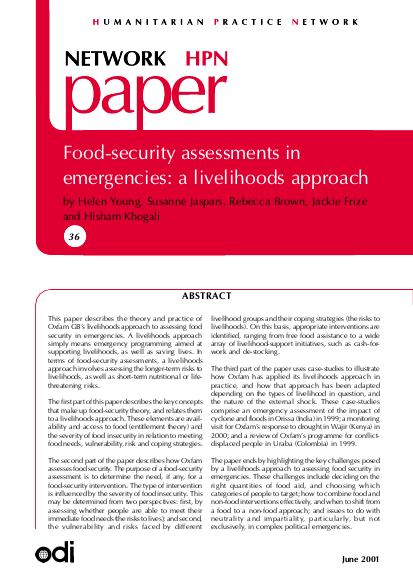A Livelihoods Approach

This paper describes the theory and practice of
Oxfam GB’s livelihoods approach to assessing food
security in emergencies. A livelihoods approach
simply means emergency programming aimed at
supporting livelihoods, as well as saving lives. In
terms of food-security assessments, a livelihoods
approach involves assessing the longer-term risks to
livelihoods, as well as short-term nutritional or lifethreatening
risks.
The first part of this paper describes the key concepts
that make up food-security theory, and relates them
to a livelihoods approach. These elements are availability
and access to food (entitlement theory) and
the severity of food insecurity in relation to meeting
food needs, vulnerability, risk and coping strategies.
The second part of the paper describes how Oxfam
assesses food security. The purpose of a food-security
assessment is to determine the need, if any, for a
food-security intervention. The type of intervention
is influenced by the severity of food insecurity. This
may be determined from two perspectives: first, by
assessing whether people are able to meet their
immediate food needs (the risks to lives); and second,
the vulnerability and risks faced by different
livelihood groups and their coping strategies (the risks to
livelihoods). On this basis, appropriate interventions are
identified, ranging from free food assistance to a wide
array of livelihood-support initiatives, such as cash-forwork
and de-stocking.
The third part of the paper uses case-studies to illustrate
how Oxfam has applied its livelihoods approach in
practice, and how that approach has been adapted
depending on the types of livelihood in question, and
the nature of the external shock. These case-studies
comprise an emergency assessment of the impact of
cyclone and floods in Orissa (India) in 1999; a monitoring
visit for Oxfam’s response to drought in Wajir (Kenya) in
2000; and a review of Oxfam’s programme for conflictdisplaced
people in Uraba (Colombia) in 1999.